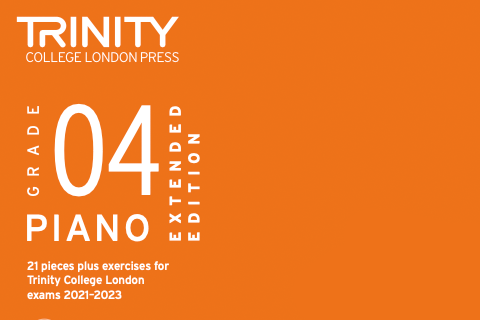Here are my notes on time spent on grade four. I’ve got a fair amount of detail written up in my post “How much should you study for piano grade exams?” and you might want to check that out if you’re after general advice. That post into the Trinity TQT numbers and whether or not they’re accurate.
I’ve done too many grades back to back and pushing grade four to completion was a real struggle. I picked it up and put it down several times which dragged the whole process out. I contemplated giving up on it several times as I didn’t really like the pieces in the first place. Grading is pretty grindy and I am at risk of burning out if I continue on to five now. I am on a self-imposed break from grading and not looking at another one until 2025. I’ll look at the syllabus then and decide on whether I do five or skip to six.
| Grade | Started | Finished | Elapsed Days |
| Grade 1 | 29 Dec 2020 | 10 Jul 2021 | 193 |
| Grade 2 | 14 Jul 2021 | 14 Nov 2021 | 123 |
| Grade 3 | 21 Nov 2021 | 26 May 2022 | 186 |
| Grade 4 | 29 May 2022 | 16 Aug 2023 | 444 |
My teacher estimates I’ve nearly given up on it four times.
The Numbers
The recommended Total Qualifying Times from Trinity for Grade Four are:
- Guided Learning Hours (Piano Lessons): 24
- Independent Learning Hours (Practice): 126
During the time I studied for Grade Four I did 45 hours of lessons. That said, we actually seldom discuss Trinity during lessons and most of our time is spent on other non-grading pieces I am working on.
My total Independent Learning Hours were 184.38.
I’ve been pretty bang on the TQT for the previous grades but in grade four I overran the hours for a few reasons:
- Motivation: Constant starting, stopping, forgetting, restarting, etc is not an efficient use of time.
- Delay in recording: Trinity took a month to provide the upload credentials for me to do the recording so that was an extra month of keeping everything performance ready.
- Nerves: I was extremely unsettled when I first attempted to record my performance and I needed cram a lot of camera time to get the anxiety levels under control.
In terms of time on individual deliverables:
| Deliverable | Time Practised |
| Remembrance by Maria Misfud | 42.43 |
| Tango Passionis by Barbara Arens | 35.53 |
| Waltz Mystique by Ray Moore | 37.95 |
| Scales and Arpeggios | 24.63 |
| Technical Exercises | 43.83 |
It has always taken me 30 hours to get something to performance ready. As my skills at the keyboard have improved then content has gotten more difficult so it still takes 30 hours 😀. Maybe one day in the distant future the content will stop getting harder and I will be able to learn pieces faster.
The last two rows in that table probably seem excessive but I started with the technical exercises so they just got a lot of work by virtue of keeping them at top of mind for 400+ days.
Results
| Piece | Comments | Fluency & Accuracy | Technical Facility | Communication & Interpretation | Total |
| Tango Passionis by Barbara Arens | This flowed with assurance and the tempo was well-chosen for the Tango style. Rubato was used to good musical effect and the melody was mostly well-projected. | 7 / 7 | 6 / 7 | 8 / 8 | 21 / 22 |
| Remembrance by Maria Misfud | This was a fluent and accurate performance. The tone was mostly well-produced and the pedal coordination was secure. Movement around the keyboard was fluid and the sensitive style was fully communicated throughout. | 7 / 7 | 6 / 7 | 8 / 8 | 21 / 22 |
| Waltz Mystique by Ray Moore | The waltz style was clearly understood and the LH chords provided a secure accompaniment to the well- projected melody. There were only occasional moments of tonal unevenness in some of the quaver passages. | 7 / 7 | 6 / 7 | 8 / 8 | 21 /22 |
| Technical Work | The scales were promptly started and the notes were accurate with only momentary unevenness in the delivery. The differences in articulation and dynamic were conveyed. Both arpeggios were neat and fluent. Ex 3a had confident articulation and the musical details were assured. Ex 1a had a mostly well-projected melody and the phrases were confidently portrayed. | – | – | – | 13 / 14 |
| Performance Delivery and Focus | A calm and organised approach was demonstrated throughout with suitably paced transitions and excellent focus. | – | – | – | 10 / 10 |
| Musical Awareness | This stylish performance was presented with commitment and keen individual expression. | – | – | – | 10 / 10 |
| Total | – | – | – | – | 96 / 100 |
Not withstanding my motivation problems with grade four, I would recommend grading as a part of your musical education:
- You get an independent check point on where you are at.
- You learning to take pieces to peak performance level.
- You explore repertoire you might otherwise not. Left to my own devices I would not choose to play a Tango but I did as a part of grade four.
I emphasise part as I don’t think working through only the board syllabus will result in you being a good musician.
To date, 19.73% of my time at the keyboard and studying theory was related to Trinity grading. The rest of it was other pieces and things I’ve explored with my teacher.
